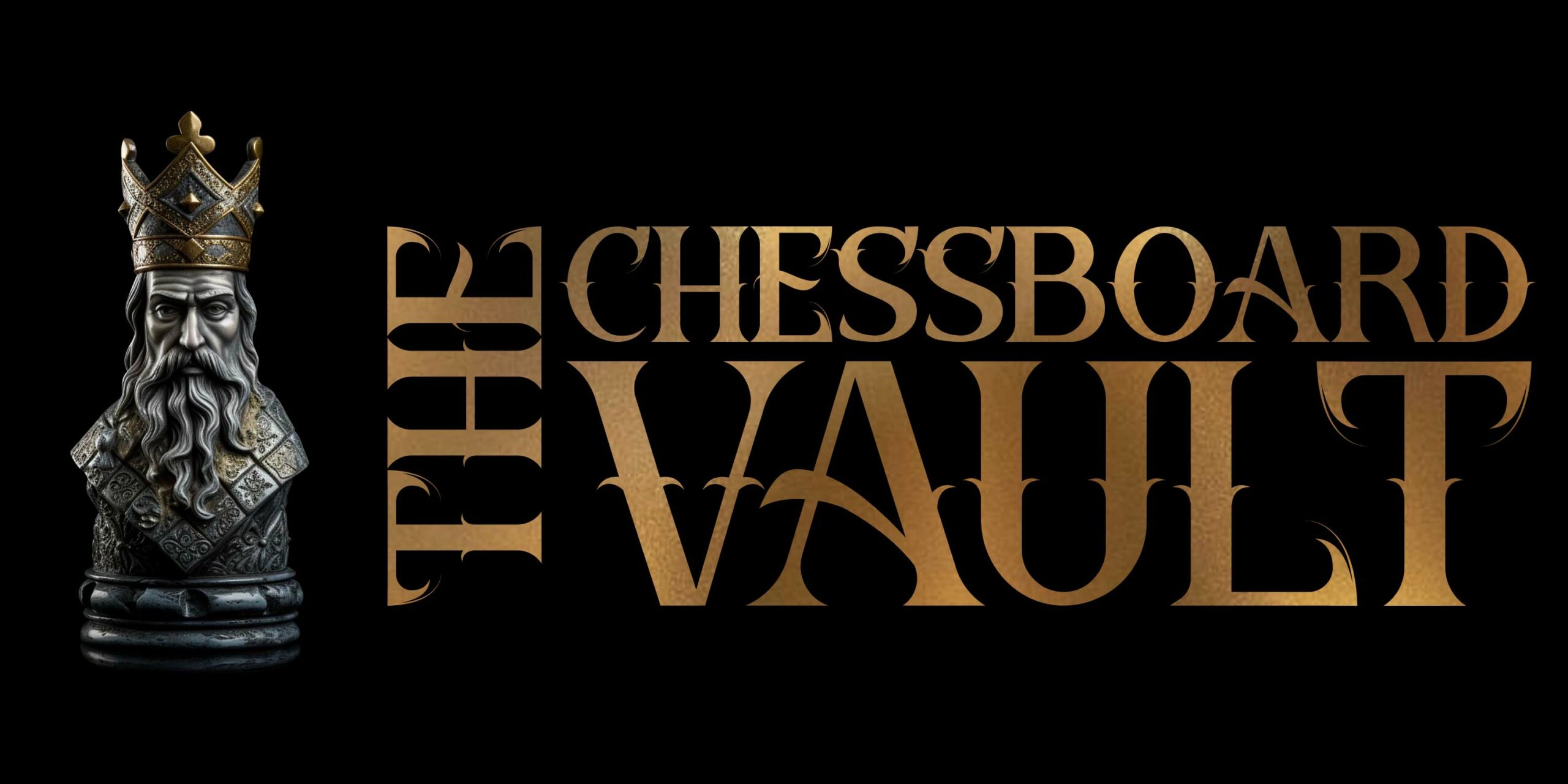For those enchanted by the royal game, understanding chess tactics is akin to learning the very language of the board. Tactics are the tools and techniques that allow a player to capture pieces, set traps, and turn the tide of a seemingly lost game. But where does one begin on this journey of tactical discovery? Dive into the realm of pins, skewers, forks, and discovered attacks with the best chess tactics books!
Many budding players have grappled with the intricate dance of pieces on the 64-square battlefield, often missing opportunities hidden in the weave of the game. It’s not just about knowing how each piece moves, but understanding the deeper synergy and tactical possibilities that arise from their coordination. A great chess tactics book will not only introduce you to these motifs but will also provide a roadmap to integrate them seamlessly into your gameplay.
From classics that have withstood the test of time to modern masterpieces that integrate computer analysis, the literature on chess tactics is vast and varied. Some books cater to the absolute beginner, laying the foundational understanding, while others are crafted for the intermediate or advanced player, sharpening their skills and challenging their perceptions.
But why is delving into these books essential for any aspiring chess enthusiast? Simply put, mastering tactics is the quickest way to improve your game. While strategic understanding and endgame knowledge are crucial, it is often the tactical prowess that decides the outcome of many battles, especially in the amateur arena.
Whether you’re a novice eager to learn the basic tactical motifs or a club player looking to elevate your game, there’s a perfect book waiting to be your guide. Embark on this enthralling journey through the world’s finest chess combinations, and let the magic of tactics transform your game!
“Tune Your Chess Tactics Antenna” by Emmanuel Neiman
“Tune Your Chess Tactics Antenna” by Emmanuel Neiman is an insightful chess book that takes a somewhat unconventional approach to the study of tactics. Instead of merely presenting a compendium of puzzles and motifs, Neiman delves into the cognitive aspects of recognizing tactical opportunities.
The main premise of the book is that players often miss tactics because they are not attuned to certain “signals” on the board. These signals might be undefended pieces, potential pins, open lines, or other features that suggest a tactical possibility exists. Neiman’s method is centered around training the mind to become more sensitive to these signals, thereby increasing the chance of spotting tactics in actual gameplay.
A unique feature of the book is its emphasis on the psychological side of tactics. It tries to understand why players miss tactical shots in their games and offers guidance on how to overcome these blind spots. Each chapter is structured around a specific signal, with illustrative examples and exercises for the reader to solve.
Neiman’s writing style is approachable and laced with humor, which makes the learning process enjoyable. Moreover, the selection of examples is fresh, avoiding the overused puzzles that appear in many tactics books.
“Chess Tactics for Champions” by Susan Polgar and Paul Truong
“Chess Tactics for Champions” is co-authored by Grandmaster Susan Polgar, a former Women’s World Chess Champion, and Paul Truong. The book occupies a distinguished place among the best chess tactics books available to enthusiasts.
The primary strength of this book lies in its systematic approach. It doesn’t merely present puzzles; it methodically takes the reader through a wide range of tactical motifs, from pins and skewers to more complex combinations. Each chapter focuses on a particular tactical theme, ensuring that readers get a comprehensive understanding of that motif before moving on. The authors emphasize recognizing patterns, which is the key to mastering tactics in actual gameplay.
Polgar, with her vast experience as a world-class player, and Truong, a renowned chess coach and promoter, combine their insights to craft a book that’s both instructional and practical. They share their unique perspectives on how to think during a game, how to spot opportunities, and, importantly, how to avoid common pitfalls. Their illustrative examples, carefully chosen from both historic and contemporary games, underscore the lessons in each chapter.
The exercises in the book are designed to challenge and grow the reader’s tactical prowess progressively. They range from relatively simple problems suitable for beginners to complex scenarios that even seasoned players would find challenging.
Another advantage of “Chess Tactics for Champions” is its accessibility. Polgar and Truong have a clear and engaging writing style that resonates with readers of all ages and skill levels.
“The Complete Chess Workout: Train your brain with 1200 puzzles!” by Richard Palliser
“The Complete Chess Workout: Train your brain with 1200 puzzles!” penned by Richard Palliser holds its own among the best chess tactics books. In this comprehensive guide, Palliser presents an exhaustive set of puzzles that challenge players of various skill levels, ensuring that every enthusiast finds something to sharpen their tactical acumen.
A distinct feature of this book is its sheer volume and variety. With 1200 puzzles, readers are exposed to a vast spectrum of tactical motifs, ensuring repetitive practice and pattern recognition – two critical elements for mastering chess tactics. The puzzles are categorized based on themes, allowing players to focus on specific areas of improvement.
Palliser, an established chess author, ensures that the selection is balanced, mixing classic positions with modern games. His thoughtful curation provides readers with a holistic view of tactics across different eras of chess. Each puzzle is designed to hone the reader’s skills, pushing them to think, analyze, and ultimately, improve.
Furthermore, the book’s structure promotes self-evaluation. Solutions are provided, but they’re located at the end, encouraging readers to genuinely wrestle with each problem before seeking the answer. This format emphasizes the training aspect, ensuring the brain gets its due workout.
For those in search of a comprehensive tactical training resource, “The Complete Chess Workout” is an invaluable addition to their chess library. Among the myriad of best chess tactics books available, Palliser’s offering stands out for its volume, variety, and emphasis on self-improvement. It truly is a complete workout for the chess enthusiast’s brain.
“Encyclopedia of Chess Combinations” by Chess Informant
“Encyclopedia of Chess Combinations” published by Chess Informant is a magnum opus in the realm of chess literature and rightly secures its place among the best chess tactics books. It serves as a comprehensive repository of chess combinations, making it an invaluable resource for players ranging from aspiring amateurs to seasoned grandmasters.
Unlike many other chess books that focus on introductory tactics or provide a mix of strategy and tactics, this encyclopedia dives deep into the world of combinations. It categorically collates thousands of positions, each showcasing a distinct combinative idea, making it one of the most thorough compilations in existence.
The meticulousness of Chess Informant is evident in their categorization. The combinations are systematically classified based on motifs such as pins, forks, decoys, and more. This organized approach allows players to immerse themselves in a specific theme, enhancing their ability to recognize and execute similar combinations in their games.
Another significant advantage of this encyclopedia is its breadth of sources. The positions are extracted from a vast array of games, spanning different eras and styles of chess. This diversity ensures that readers are not just exposed to classical combinations but also to modern masterpieces.
What sets the “Encyclopedia of Chess Combinations” apart from other tactical resources is its sheer depth. It’s not merely a book; it’s a monumental reference that players can revisit throughout their chess journey. The nuanced insights and the variety of positions provide continuous learning, challenging even the most advanced players.
“Advanced Chess Tactics” by Lev Psakhis
“Advanced Chess Tactics” by Lev Psakhis is a seminal work that has carved its niche among the best chess tactics books. Written by a former two-time USSR Champion, this book is a deep dive into the intricate waters of high-level tactical play, intended for seasoned players who aim to refine and elevate their tactical prowess.
Psakhis, known for his profound understanding of the game, takes readers on a journey through complex tactical motifs that are often seen in grandmaster play but may elude the understanding of club players. Rather than just presenting puzzles for rote practice, Psakhis elucidates the underlying principles and ideas that give birth to these combinations. This pedagogical approach not only trains the reader’s calculative abilities but also instills a deeper understanding of the game’s inherent logic.
One of the standout features of “Advanced Chess Tactics” is the breadth of content covered. Psakhis delves into various themes, from classical motifs like pins and skewers to more intricate ideas such as the interference of lines or the exploitation of weak squares. The diverse range of topics ensures that readers are equipped with a holistic tactical toolkit.
The book is enriched with examples from both classic games and modern encounters. Psakhis’s analysis is meticulous, and he often shares insights from his own experiences, adding a personal touch to the lessons. His narrative style, peppered with anecdotes and reflections, makes the book not only instructive but also engaging.
In the realm of the best chess tactics books, “Advanced Chess Tactics” is a must-have for any serious chess enthusiast. Psakhis’s depth of knowledge, combined with his passion for sharing intricate tactical nuances, results in a masterclass that offers readers a unique opportunity to hone their skills and step closer to mastery.
“1001 Deadly Checkmates” by John Nunn
“1001 Deadly Checkmates” by the renowned chess author and grandmaster, Dr. John Nunn, is a compelling entry in the pantheon of the best chess tactics books. As the title suggests, the book presents readers with a gauntlet of tactical exercises, all centered around the thrilling theme of checkmate.
Nunn, with his distinguished reputation both as a world-class player and a lucid chess writer, emphasizes the practical aspect of tactics. Each puzzle in the book is rooted in realistic game scenarios, ensuring that readers are not just solving abstract problems but are actively training for situations they might encounter over the board.
The range of puzzles is vast, catering to players of various skill levels. While some exercises test basic mating patterns, others challenge the reader’s depth of calculation and vision. This variety ensures that “1001 Deadly Checkmates” remains relevant and challenging even as one’s tactical skills improve.
A unique feature of this book is Nunn’s focus on error avoidance. He not only highlights the correct solutions but also delves into common mistakes and pitfalls, teaching readers not just how to win but also how to avoid snatching defeat from the jaws of victory.
The meticulously chosen puzzles are complemented by Nunn’s clear and concise explanations. He breaks down complex positions with ease, making even the most intricate combinations accessible to readers.

